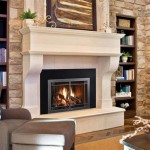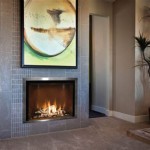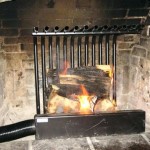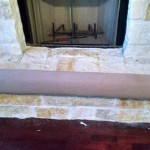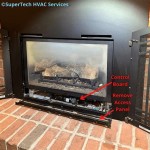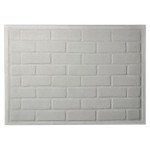Contemporary Fireplace Inserts: Wood Burning Options for Modern Homes
Contemporary fireplace inserts represent a sophisticated evolution of traditional wood-burning fireplaces. These units offer a blend of classic aesthetics with modern technology, providing efficient heating and improved air quality compared to older, open-hearth fireplaces. Choosing a wood-burning insert allows homeowners to retain the ambiance and charm of a real fire while benefiting from increased safety, reduced emissions, and enhanced heating capabilities.
Fireplace inserts, by definition, are self-contained heating appliances designed to fit within an existing fireplace opening. This makes them an ideal retrofit option for homeowners looking to upgrade their inefficient traditional fireplaces. Instead of losing significant heat up the chimney, as is typical with open fireplaces, wood-burning inserts are designed to radiate heat into the room. This increased efficiency translates to lower heating bills and a more comfortable living space.
The contemporary design elements of these inserts are characterized by clean lines, minimalist aesthetics, and the use of high-quality materials. They often feature large glass viewing areas that provide an unobstructed view of the fire. Finishes can range from matte black and brushed nickel to enameled colors, allowing homeowners to select an insert that seamlessly integrates with their existing décor. Some models also incorporate features like remote controls, automatic blowers, and adjustable air controls for added convenience and performance.
Increased Heating Efficiency and Reduced Wood Consumption
One of the primary advantages of contemporary wood-burning fireplace inserts is their significantly higher heating efficiency compared to traditional open fireplaces. Open fireplaces typically have efficiency ratings of 10% or less, meaning that most of the heat generated by the fire is lost up the chimney. Wood-burning inserts, on the other hand, can achieve efficiency ratings of 70% or higher. This dramatic improvement is due to several factors, including the airtight construction of the insert firebox, the use of catalytic or non-catalytic combustion systems, and the incorporation of heat-circulating blowers.
Airtight construction prevents uncontrolled air leaks, ensuring that combustion occurs in a controlled and efficient manner. The fire receives only the amount of air necessary for optimal burning, which minimizes heat loss and maximizes the energy extracted from the wood. This controlled burn also results in more complete combustion of the wood fuel, reducing the amount of smoke and creosote produced.
Catalytic and non-catalytic combustion systems are designed to further improve the combustion process. Catalytic combustors use a ceramic honeycomb coated with a catalyst, such as palladium, to lower the ignition temperature of the smoke and unburned gases. This allows these gases to burn more completely, resulting in higher efficiency and lower emissions. Non-catalytic combustion systems rely on a combination of advanced firebox design, insulation, and secondary air injection to achieve similar results. These systems are often simpler and less expensive than catalytic systems, but they can still provide excellent efficiency and clean burning.
Heat-circulating blowers are another important component of many contemporary wood-burning inserts. These blowers draw air from the room, circulate it around the firebox, and then return the heated air back into the room. This forced convection system increases the rate at which heat is transferred from the insert to the living space, making it more effective at heating a large area. The blowers are often thermostatically controlled, allowing them to automatically adjust their speed based on the temperature of the firebox.
The increased efficiency of wood-burning inserts translates to significant savings in wood consumption. Because they extract more heat from each log, homeowners can burn less wood to achieve the same level of warmth. This not only reduces the cost of heating but also minimizes the amount of time and effort required to gather, split, and store firewood.
Improved Air Quality and Reduced Emissions
Another significant benefit of contemporary wood-burning inserts is their ability to reduce emissions and improve air quality. Traditional open fireplaces are notorious for producing large amounts of smoke, particulate matter, and other pollutants. These emissions can contribute to respiratory problems, exacerbate allergies, and negatively impact the environment. Wood-burning inserts, on the other hand, are designed to burn wood more cleanly and efficiently, resulting in significantly lower emissions.
The Environmental Protection Agency (EPA) has established emission standards for wood-burning appliances, including fireplace inserts. These standards require manufacturers to design and test their products to ensure that they meet certain emission limits. Contemporary wood-burning inserts that are EPA-certified have been shown to produce significantly less particulate matter than older, non-certified appliances.
The design features that contribute to higher efficiency also contribute to lower emissions. Airtight construction, catalytic or non-catalytic combustion systems, and secondary air injection all help to ensure that wood burns more completely and that fewer pollutants are released into the atmosphere. These features also reduce the amount of creosote produced, which is a flammable substance that can accumulate in the chimney and pose a fire hazard.
In addition to reducing emissions at the source, some contemporary wood-burning inserts also incorporate air filtration systems. These systems use filters to remove particulate matter and other pollutants from the air that is circulated through the insert. This can further improve indoor air quality and create a healthier living environment.
Using seasoned wood is crucial for minimizing emissions. Dry wood burns hotter and more cleanly than green or wet wood. Seasoning typically involves splitting the wood and allowing it to air dry for at least six months to a year. This reduces the moisture content of the wood, making it easier to ignite and burn efficiently.
Enhanced Safety and Convenience Features
Contemporary wood-burning fireplace inserts offer several features that enhance safety and convenience compared to traditional open fireplaces. Open fireplaces pose a number of safety hazards, including the risk of sparks and embers escaping into the room, the potential for chimney fires, and the possibility of carbon monoxide poisoning. Wood-burning inserts are designed to mitigate these risks and provide a safer and more comfortable heating experience.
The enclosed firebox of a wood-burning insert prevents sparks and embers from escaping into the room. This eliminates the risk of accidental fires and protects furniture and flooring from damage. The glass door that covers the firebox also prevents drafts and keeps smoke from entering the room.
The use of a stainless steel or cast iron liner connecting the insert to the chimney is essential for safely venting combustion gases. This liner prevents creosote from accumulating on the interior walls of the chimney, reducing the risk of chimney fires. Proper installation of the liner is crucial to prevent carbon monoxide from leaking into the house.
Many contemporary wood-burning inserts also incorporate safety features such as over-temperature sensors and automatic shut-off mechanisms. These features are designed to prevent the insert from overheating and causing damage to the appliance or surrounding structure.
In terms of convenience, some contemporary wood-burning inserts offer features such as remote controls, automatic blowers, and adjustable air controls. Remote controls allow homeowners to adjust the fire without having to approach the insert. Automatic blowers automatically adjust their speed based on the temperature of the firebox, maintaining a consistent and comfortable temperature in the room. Adjustable air controls allow homeowners to fine-tune the combustion process, optimizing efficiency and reducing emissions.
The large glass viewing area of many contemporary wood-burning inserts provides an unobstructed view of the fire, adding to the aesthetic appeal of the appliance. This allows homeowners to enjoy the ambiance of a real fire without the safety hazards and inefficiencies of a traditional open fireplace.
Selecting the appropriate size of the wood-burning insert is crucial for maximizing efficiency and ensuring adequate heating. Over-sizing the insert can lead to incomplete combustion and increased emissions, while under-sizing it may not provide sufficient heat for the room. A qualified professional can assess the size and layout of the room and recommend an insert that is appropriately sized for the space.
Regular maintenance is essential for ensuring the safe and efficient operation of contemporary wood-burning inserts. This includes cleaning the chimney regularly to remove creosote buildup, inspecting the appliance for any signs of damage or wear, and replacing any worn or damaged parts. Following the manufacturer's recommendations for maintenance and operation will help to extend the lifespan of the insert and ensure that it continues to operate safely and efficiently.

Napoleon Epi3 Wood Fireplace Insert Inserts By

Fireplace Insert Stoves Wood Gas Pellet Traditional Baltimore Maryland

Wood Burning Fireplace Inserts Insert Installation

Balance Nature Wood Burning Fireplace Bf Inserts Modern Stoves

Modern Indoor Fireplace With Niche For Wood Lareiras Embutidas Ideias Para Lareira Decoração Sala

Medium Flush Wood Rectangular Nexgen Fyre Made In America Fireplace Xtrordinair

Wood Burning Fireplace Insert R 700 Attika Feuer Ag Steel Contemporary

T25i Timberwolf Wood Fireplace Insert Hearth Stove Patio

Ci2700 Contemporary Wood Burning Insert By Regency

30 Ruby Contemporary Intellifire Touch Direct Vent Fireplace Insert Blower And Remote Electronic Ignition Majestic
Related Posts

